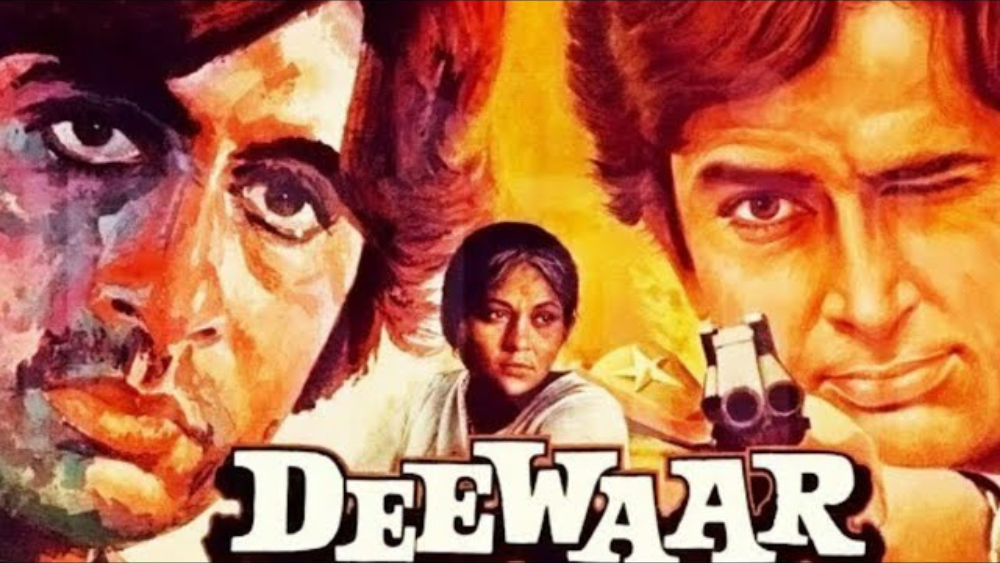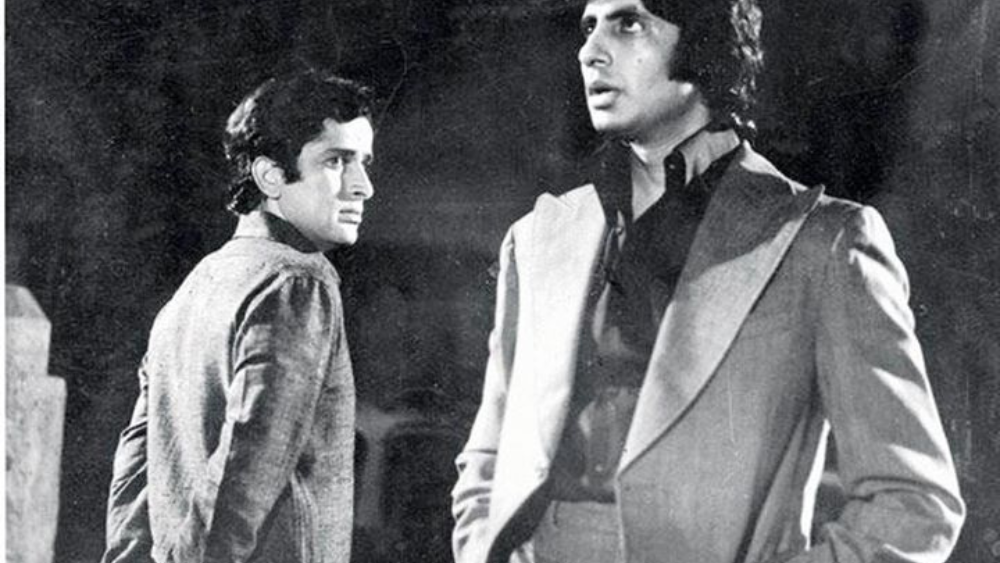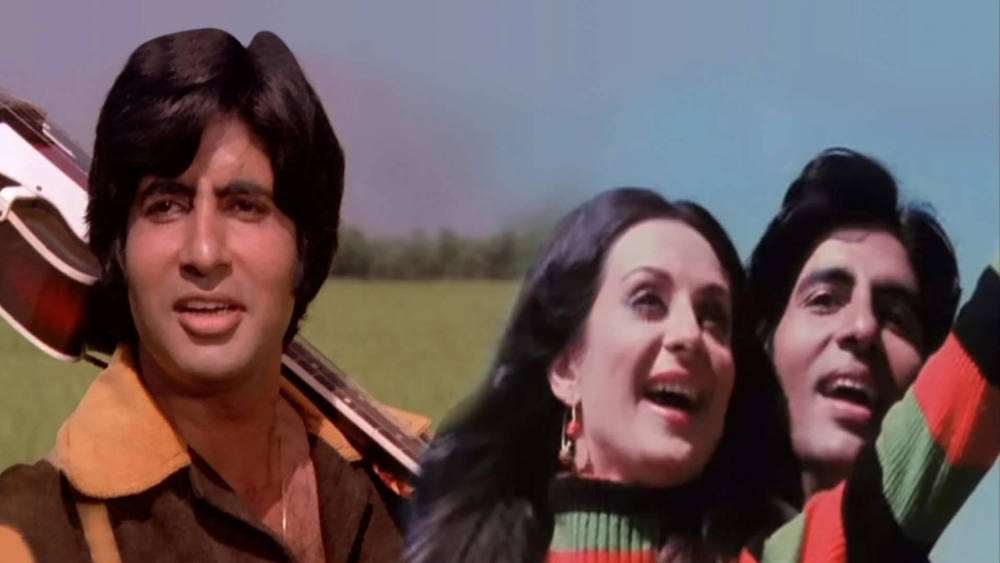Explore the iconic films of 1975 like Sholay and Deewar, marking a golden era in Hindi cinema with legendary performances and diverse storytelling.
Table of Contents
The year 1975 was pivotal for Hindi cinema, marking a creative peak with iconic films like Sholay, Deewar, Nishant, and many others. Amid the backdrop of political unrest and the Emergency, these films stood out as cultural milestones. Today, fifty years later, they continue to resonate with audiences, establishing their place as timeless classics across genres.
The Golden Year of Hindi Cinema: An Overview
1975 was not just a year of political upheaval; it was also the year when Hindi cinema experienced a remarkable wave of creativity. Among the major films released during this period were Chupke Chupke, Mili, Julie, Chhoti Si Baat, and Jai Santoshi Ma, which broadened the spectrum of cinema from intense dramas to light-hearted comedies and social commentaries.

Diverse Genres and Iconic Performances
What set 1975 apart was its diversity in cinematic storytelling. On the one hand, you had action-packed, intense dramas like Deewar, and on the other, lighter, more humorous films like Chupke Chupke. Amitabh Bachchan’s stellar performances in films like Sholay, Deewar, and Chupke Chupke showcased his versatility. His portrayal of the “Angry Young Man” became a cultural phenomenon, giving voice to the working-class angst of the time.
The Rise of Writers and Directors
This was also the year when some of the greatest filmmakers and writers in Indian cinema truly came into their own. Writers like Salim Khan and Javed Akhtar, who penned Sholay and Deewar, made a lasting impact with their dialogues and scripts. Directors such as Gulzar, Shyam Benegal, and Ramesh Sippy brought forward films that spanned various emotional tones, from lyrical political dramas to intense action thrillers. These creators formed a remarkable confluence that fueled the success of the films of 1975.
A Time of Political Reflection Through Cinema
The films of 1975 were not just entertainment; they also reflected the political climate of the time. Deewar and Sholay were more than action films—they were a window into the socio-political landscape of the 70s, a time when youth were questioning the system. These movies echoed public discontent, capturing the sentiments of a generation grappling with political uncertainty. Aandhi, on the other hand, was a poignant exploration of love set against a political backdrop.

The Shift from Commercial to Parallel Cinema
While Sholay and Deewar represented the peak of commercial cinema, Nishant brought a fresh perspective with its parallel cinema approach, exploring the harsh realities of rural India and feudalism. Directors like Shyam Benegal were instrumental in steering this wave of parallel cinema, offering more introspective and socially conscious narratives that complemented the commercial blockbusters.
Amitabh Bachchan’s Multifaceted Stardom
Amitabh Bachchan’s performances in 1975 were nothing short of legendary. In Deewar and Sholay, he became the quintessential action hero, embodying the anger and frustration of a generation. But his roles in Chupke Chupke and Mili revealed his comedic and dramatic range, showcasing his incredible versatility as an actor. These performances solidified his position as one of Hindi cinema’s greatest stars and laid the foundation for his enduring career.

The Power of Strong Writing in 1975 Films
The writing in 1975 films played a crucial role in their success. Writers like Salim-Javed and Gulzar captured the pulse of the nation, creating dialogues that resonated with the audience. Deewar, in particular, became a template for how commercial cinema could incorporate social and political commentary. The success of these films reflected the strong connection between writers and the public, as the stories were rooted in the realities and frustrations of everyday life.
Cinema Reflecting Public Sentiment: The Anti-Establishment Wave
The films of 1975 often carried an anti-establishment sentiment that mirrored the public’s mood. Deewar’s portrayal of a protagonist who challenges the system struck a chord with audiences who were disillusioned by the socio-political climate of the time. This rebellion against authority was a recurring theme in many films of the era, making them deeply relatable and popular.
The Lasting Legacy of 1975 Films in Indian Cinema
The legacy of 1975’s films continues to shape Indian cinema. The variety of genres and the wide range of performances set a new benchmark for storytelling. From the action-packed dramas to the thought-provoking narratives of parallel cinema, these films influenced the direction of Hindi cinema for years to come. As we mark the 50th anniversary of this iconic year, we remember the creative brilliance that defined 1975 as a golden period in Indian cinema.

Conclusion: A Milestone in Hindi Cinema’s History
The year 1975 remains a milestone in the history of Hindi cinema. It was a year that birthed iconic films, groundbreaking performances, and new creative directions. From Sholay’s larger-than-life action to Aandhi’s tender political love story, the diversity in storytelling and the strength of performances from Amitabh Bachchan and others made it a year to remember. Fifty years later, these films continue to be celebrated, proving that the magic of 1975 is still alive in the hearts of movie lovers.
FAQs
What made 1975 a creative peak for Hindi cinema?
1975 was a transformative year for Hindi cinema, marked by the release of films like Sholay, Deewar, Aandhi, and Nishant. The confluence of exceptional directors, writers, and actors led to a surge of creativity that spanned across genres.
How did Sholay influence Hindi cinema in 1975?
Sholay became a game-changer for Indian cinema with its unforgettable characters, dialogues, and innovative blend of genres. The film set new standards for storytelling, action sequences, and cinematic scale in Hindi cinema.
What role did Amitabh Bachchan’s characters play in 1975?
In 1975, Amitabh Bachchan’s roles in Deewar and Sholay solidified his “Angry Young Man” persona, symbolizing the frustrations of the working class, while his roles in Chupke Chupke and Mili showed his range as an actor in lighter, more humorous roles.
How did Salim-Javed redefine commercial cinema in 1975?
Salim Khan and Javed Akhtar’s writing for films like Deewar and Sholay brought a new level of intensity to commercial cinema. Their scripts introduced complex characters, gripping narratives, and hard-hitting dialogues, which became a hallmark of Hindi cinema.
What impact did Aandhi have on the audience in 1975?
Aandhi offered a unique political love story, exploring themes of power, sacrifice, and personal loss. The film’s poignant storytelling, directed by Gulzar, resonated with audiences by combining romance with the political context of the time.
How did parallel cinema contribute to Hindi cinema in 1975?
Nishant, a parallel cinema film by Shyam Benegal, explored social issues such as feudalism in rural India. It brought attention to more serious and socially relevant subjects, offering an alternative to the commercial films of the era.
What was the significance of the film Chupke Chupke in 1975?
Directed by Hrishikesh Mukherjee, Chupke Chupke was a delightful comedy that featured Amitabh Bachchan in a rare light-hearted role. The film’s sophisticated humor and clever dialogues marked it as one of the standout comedies of the 1970s.
Why did 1975 see a balance between commercial and parallel cinema?
The year 1975 saw both commercial hits like Sholay and Deewar and the rise of parallel cinema with films like Nishant. This balance brought diverse perspectives and genres, enriching the Indian film landscape and appealing to a wide audience.
How did Hindi cinema reflect the political climate of 1975?
The Emergency period of 1975 had a profound impact on Hindi cinema. Films like Deewar and Aandhi subtly or directly reflected the growing disillusionment with the establishment, with themes of resistance, rebellion, and questioning authority.
What makes the films of 1975 still relevant today?
The films of 1975 continue to be remembered for their timeless themes of social justice, complex characters, and deep emotional resonance. They still hold cultural and cinematic value, influencing modern filmmaking and continuing to captivate audiences.
By watchnewz
